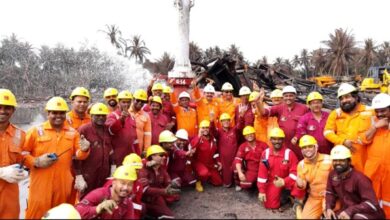The Severe And Life-Threatening Impacts Of Climate Change In India
Regions like Delhi, Haryana, and Chandigarh, with temperatures soaring to 50 degrees Celsius, consequences are dire for both humans and animals

The Climate Crisis in India
The current heatwave is a stark reminder of the climate crisis driven by long-term shifts in temperatures and weather patterns. While natural factors like changes in the sun’s activity and volcanic eruptions can influence climate, human activities since the 1800s, especially the burning of fossil fuels, have been the primary contributors to climate change.
Impact on Human Health and Daily Life
The extreme heat is severely affecting daily life and health in northern and central India:
- Human Health: The heat has already claimed 60 lives since March 1st, with many more suffering from heat-related illnesses. The government data shows thousands of heat stroke cases, highlighting the public health emergency.
- Daily Life: Outdoor activities during peak heat hours are nearly impossible. The poor and those without access to air conditioning suffer the most, as they must continue working outside. The divide between those who can afford cooling and those who cannot is stark, with wealthier individuals able to move between air-conditioned environments, while the less fortunate have to rely on shade and other rudimentary methods to stay cool.
Economic and Infrastructure Strain
India is also facing significant economic challenges due to the heatwave:
- Power Shortages: The country is bracing for its largest power shortfall in 14 years, exacerbated by decreased hydropower generation. Efforts to prevent outages include delaying maintenance of power plants and reactivating unused units.
- Impact on Workers: Laborers, street vendors, and others who work outdoors face increased health risks and economic hardship due to decreased productivity and the need to avoid the sun during the hottest parts of the day.
Environmental Impact
The effects of extreme heat extend beyond human discomfort and health risks:
- Animal Suffering: Animals, both wild and domestic, struggle to survive in such extreme conditions. The risk of heat-related illnesses and death increases as temperatures rise.
- Ecosystem Disruption: Higher temperatures can push species to higher altitudes in search of cooler habitats, but this migration is not always possible, leading to potential losses in biodiversity.
Scientific Consensus and Future Projections
- The IPCC’s fifth assessment report underscores the unequivocal evidence for climate change and its undeniable impacts. The increasing frequency and intensity of extreme weather events, including heatwaves, pose serious threats to both human populations and natural ecosystems. If current trends continue, the consequences will only become more severe, with rising temperatures and more frequent extreme events.
Addressing the Crisis
To mitigate these impacts, immediate and long-term actions are necessary:
- Reducing Emissions: Transitioning to renewable energy sources and reducing reliance on fossil fuels is crucial.
- Adapting to Change: Developing infrastructure and systems to help communities adapt to extreme heat, such as better housing, access to cooling, and public health measures.
- Protecting Vulnerable Populations: Implementing policies to support the most vulnerable, including outdoor workers and the economically disadvantaged, to ensure they have access to necessary resources and protection.
The situation in India is a powerful example of the urgent need to address climate change on a global scale, through both mitigation and adaptation strategies.
The writer of this article is Dr. Seema Javed, an environmentalist & a communications professional in the field of climate and energy




